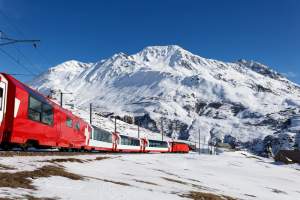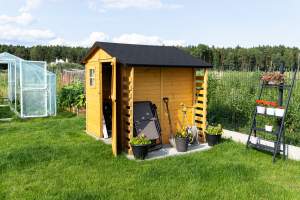
Living off the grid is a lifestyle choice that appeals to people seeking greater self-sufficiency, independence, and a closer connection to nature. It involves disconnecting from public utilities and embracing alternative solutions for energy, water, and food. While the idea of living off the grid can seem daunting, with the right preparation and mindset, it’s entirely possible. This practical guide will walk you through the steps and considerations involved in transitioning to an off-grid lifestyle.
1. Choosing the Right Location
Where you decide to live off the grid is one of the most important decisions you’ll make. The location will determine many factors, such as your access to natural resources, weather conditions, and proximity to essential services like medical care and supplies.
Factors to consider:
- Climate and weather: The local climate will impact your ability to grow food, harness solar energy, and manage water supplies. Warmer climates may provide year-round growing seasons, while colder areas will require more planning for heating and food storage.
- Access to natural resources: Look for locations with access to freshwater sources, such as rivers, lakes, or groundwater. You’ll also want a spot with plenty of sunlight for solar energy or wind for a wind turbine if you plan to use renewable energy sources.
- Zoning laws and regulations: Before settling on a location, check local zoning laws to ensure that off-grid living is allowed. Some areas have restrictions on building types, water usage, and energy systems.
Pro tip:
- Consider the availability of local materials for construction and gardening, which can help you save money and stay sustainable.
2. Setting Up Alternative Energy Sources
One of the core aspects of off-grid living is generating your own electricity. Renewable energy sources like solar, wind, and hydropower are the most common ways to power an off-grid home. Choosing the right system depends on your location and energy needs.
Common off-grid energy solutions:
- Solar power: Solar panels are a popular option because they’re reliable, relatively easy to install, and can generate electricity even in remote locations. Invest in a good battery storage system to store excess energy for cloudy days or nighttime.
- Wind power: If you live in an area with consistent winds, a wind turbine can generate electricity to supplement or replace solar power.
- Hydropower: If you have access to a flowing water source, a small hydropower system can be an efficient way to generate energy year-round.
Pro tip:
- Calculate your energy needs before choosing a system. Make sure your solar panels, wind turbines, or other energy sources can produce enough power to meet your household’s daily requirements.
3. Securing Water Supply and Filtration
Water is essential for off-grid living, and ensuring a reliable and clean water supply is critical. Depending on your location, you can collect water from natural sources, dig a well, or harvest rainwater.
Water sourcing methods:
- Rainwater harvesting: Installing rainwater collection systems, such as gutters that channel water into storage tanks, is a simple way to gather water. Be sure to filter and purify the water for drinking and cooking.
- Wells: If your location has an underground water table, drilling a well can provide a continuous supply of water. You’ll need a pump, which can be powered by solar or wind energy, to bring the water to the surface.
- Surface water: Rivers, lakes, or streams can be excellent water sources, but you’ll need a reliable filtration system to ensure the water is safe for consumption.
Water purification options:
- Gravity-fed filtration systems: These systems use gravity to push water through filters that remove contaminants.
- UV purification: Ultraviolet light can be used to kill bacteria and viruses in your water supply.
- Boiling: A simple, reliable way to purify water is to boil it for at least one minute to kill pathogens.
Pro tip:
- Always have a backup plan for water filtration and storage. Redundancy is key to ensuring a safe, reliable water supply.
4. Growing Your Own Food
Sustainability is at the heart of off-grid living, and growing your own food is a vital part of this lifestyle. Whether you have a small garden or a large plot of land, producing your own fruits, vegetables, and raising livestock can help you become more self-sufficient.
Gardening tips for off-grid living:
- Start small: Begin with a manageable garden size and gradually expand as you gain more experience.
- Use permaculture techniques: Permaculture is a sustainable gardening approach that mimics natural ecosystems. It involves using companion planting, mulching, and water conservation techniques to reduce waste and improve soil health.
- Greenhouses and cold frames: If you live in a colder climate, consider building a greenhouse or using cold frames to extend your growing season.
Raising livestock:
- Chickens: Chickens are a great choice for off-grid living. They provide eggs, meat, and natural pest control.
- Goats: Goats can provide milk, cheese, and meat, as well as help with clearing overgrown vegetation.
- Bees: Beekeeping is a sustainable way to produce honey and beeswax while also supporting pollination in your garden.
Pro tip:
- Save seeds from your best crops to plant the following season, which will save money and help you adapt your plants to your local environment.
5. Waste Management
Proper waste management is critical when living off the grid, especially in remote locations where municipal waste services are not available. You’ll need systems in place for dealing with human waste, food scraps, and other household waste in an eco-friendly manner.
Waste management solutions:
- Composting toilets: These toilets turn human waste into compost that can be used in non-edible parts of the garden. They’re eco-friendly and require no plumbing.
- Greywater systems: Greywater (wastewater from sinks, showers, and laundry) can be recycled for irrigation in your garden or to flush toilets. Be sure to use eco-friendly soaps and detergents to avoid contaminating your water.
- Composting: Turn kitchen scraps and garden waste into compost to enrich your soil. A compost pile or bin is easy to set up and helps reduce waste.
Pro tip:
- Be mindful of how you dispose of waste to avoid attracting pests or contaminating your water supply. Always separate compostable materials from non-compostable waste.
6. Building or Adapting Your Shelter
Living off the grid often means either building your own home or adapting an existing structure to suit an off-grid lifestyle. Consider energy efficiency, insulation, and sustainability when choosing or constructing your shelter.
Off-grid housing options:
- Tiny homes: Tiny homes are compact, energy-efficient, and often built with sustainable materials. They can be mobile or stationary and are ideal for minimizing energy consumption.
- Earthships: Earthships are eco-friendly homes made from natural and recycled materials like tires, bottles, and earth. They are designed to be self-sustaining, with built-in systems for solar energy, water collection, and food production.
- Cabins: Building a small, insulated cabin from wood or other natural materials is a popular choice for off-grid living. Ensure it has proper insulation and energy-efficient design to minimize heating and cooling needs.
Pro tip:
- Consider using passive solar design in your home’s construction, which uses the sun’s energy to naturally heat and cool your home without relying on external power sources.
7. Developing Survival Skills
Living off the grid requires a variety of survival skills to ensure self-sufficiency and safety. From basic first aid to wilderness skills, having the knowledge to handle different situations is crucial for long-term success.
Key survival skills to develop:
- First aid and emergency preparedness: Learn basic first aid skills and keep a well-stocked first aid kit. In remote areas, emergency services may not be readily available, so knowing how to handle minor injuries or illnesses is essential.
- Hunting and fishing: If you live in a location with wildlife, hunting and fishing can provide a reliable source of protein. Be sure to follow local regulations and practice sustainable hunting and fishing techniques.
- Fire-starting and wood chopping: If you rely on wood for heating or cooking, mastering the art of fire-starting and safely chopping wood is essential.
Pro tip:
- Take a wilderness survival course or read up on key survival skills before moving off the grid. Preparation is key to adapting to this lifestyle.
Living off the grid offers freedom, independence, and a more sustainable way of life, but it also requires careful planning, resourcefulness, and a willingness to learn new skills. By choosing the right location, setting up alternative energy sources, securing water and food supplies, and developing essential survival skills, you can successfully transition to an off-grid lifestyle. While the challenges are real, the rewards—self-sufficiency, a closer connection to nature, and a simpler way of living—are worth the effort.







